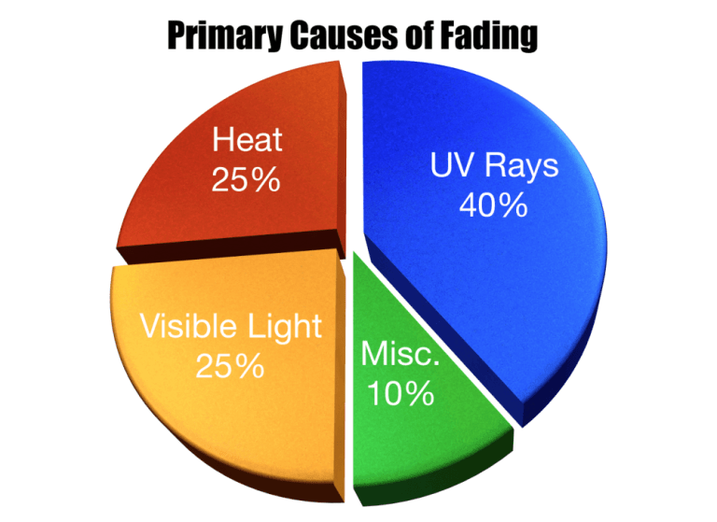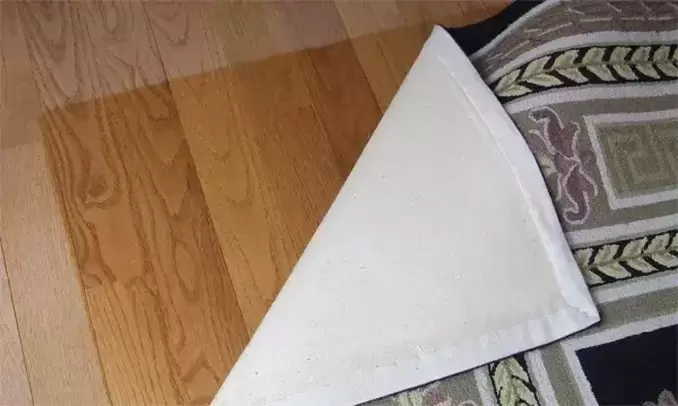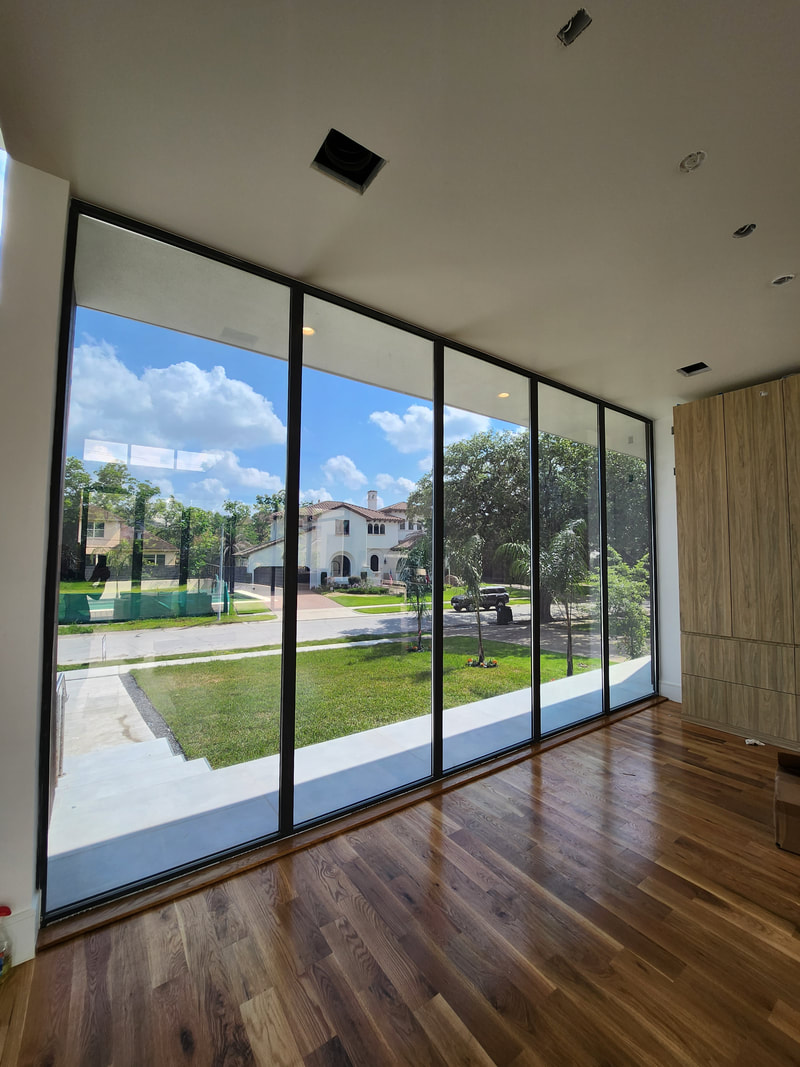|
A common misconception is that UV rays are what cause faded floors and sun damage to furnishings. While they are certainly the largest component, as this chart illustrates, they only account for 40%. Solar heat and visible light are also major contributors, accounting for 25% of the problem. The last factor is comprised of a variety of this we simply put under the heading “Other”. These are things like interior lighting, humidity, etc.
Fading is a common problem and can adversely affect upholstery, carpets, flooring, furniture and artwork. By tackling the causes of fading, an application of anti-fading window films will help.
Fading is caused by a number of factors, with three main contributors. These are illustrated in the pie chart on this page. The main contributing factor is UV rays. It’s this harmful light that accounts for 40% of the fading process. Anti-fade and UV protection window film will block out up to 99% of these rays, with specific window films blocking out up to 99.9% - preventing virtually all UV from passing through your glass. Install UV Blocking Window FilmPerhaps the best way to keep UV rays out to protect your furnishings is to install UV blocking window film. Quality UV blocking window film can keep up to 98 percent of UV rays out. Additionally, those who choose this option do not have to move their furniture or block the sunlight from shining through. It still allows for natural light and it allows you to see outside, making it a very effective solution. There are also other benefits of UV blocking window film as well, including the ability to keep energy costs down.
Many modern homes are designed with massive amounts of glass to let in as much natural light as possible. This “lets the outdoors in”, enhances the beauty of every room, and contributes to an overall sense of well being. Most everyone loves a bright home, but they also agree that glass creates problems on many levels. Large areas of glass create “hot spots”, and cause fading of furnishings and fabrics. They also contribute to soaring energy costs and even lead to safety concerns and worries about personal security. Window film is a simple and affordable way to address all those problems!
I hope this was helpful. Feel free to leave any questions or comments below 😎
3 Comments
7/12/2022 10:20:21 pm
I liked how this post shared that solar heat and visible light can contribute to the fading of furniture. My mother wants to ensure that our furniture won't fade. I think we should opt for a personalized window tint to prevent solar heat.
Reply
Leave a Reply. |




